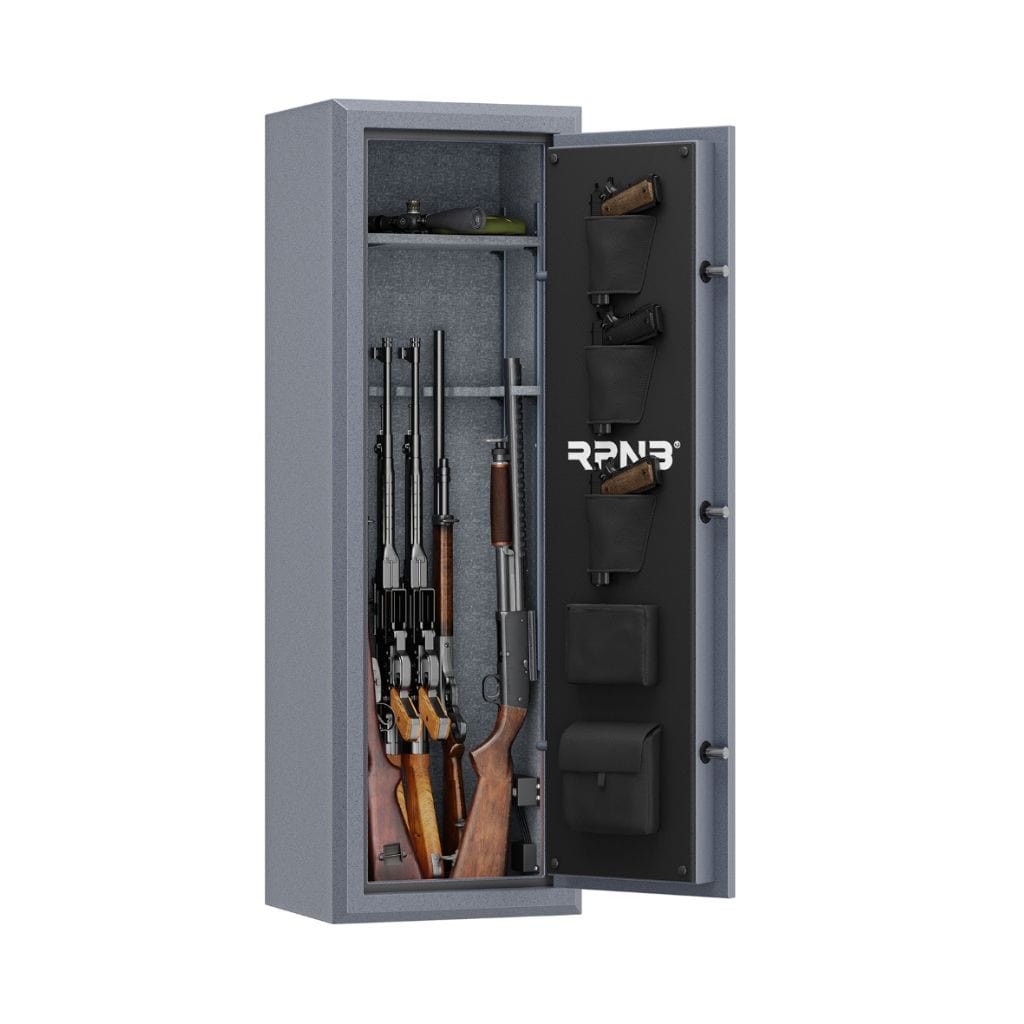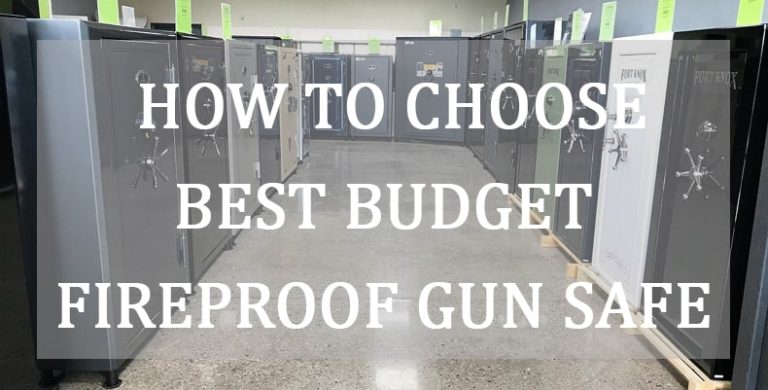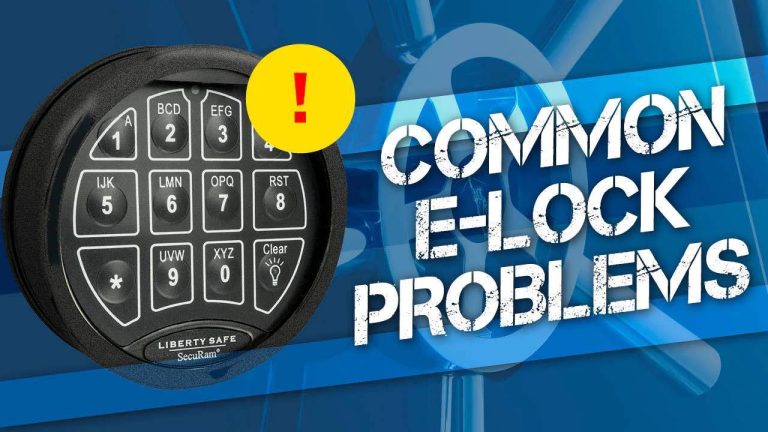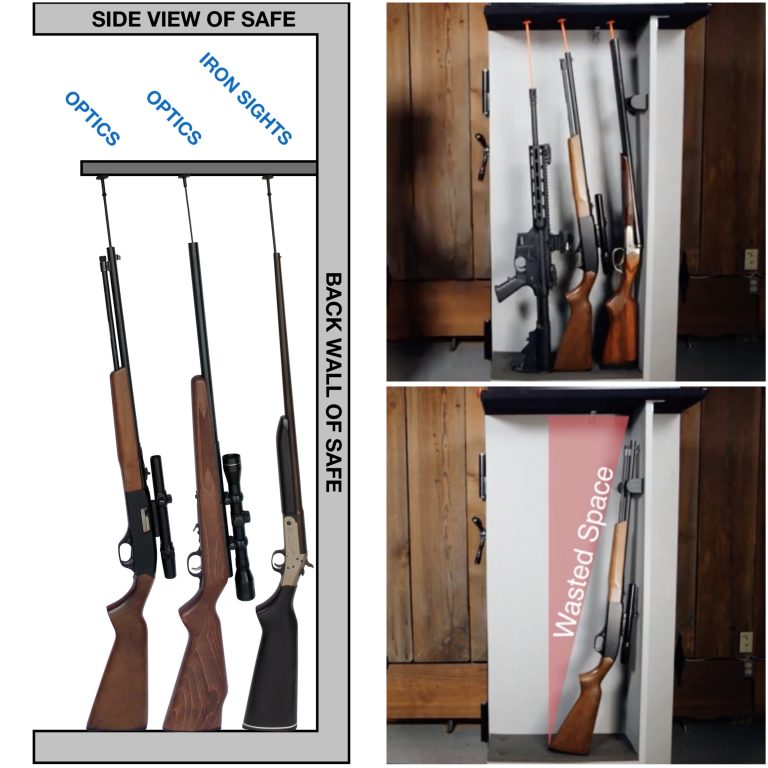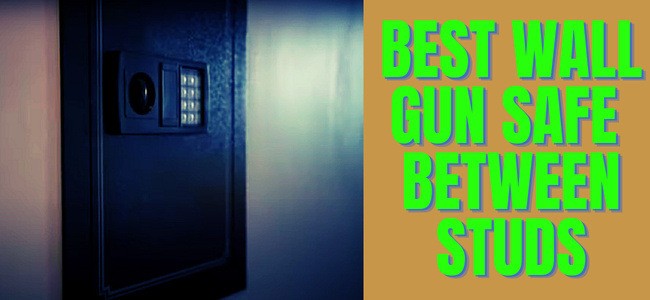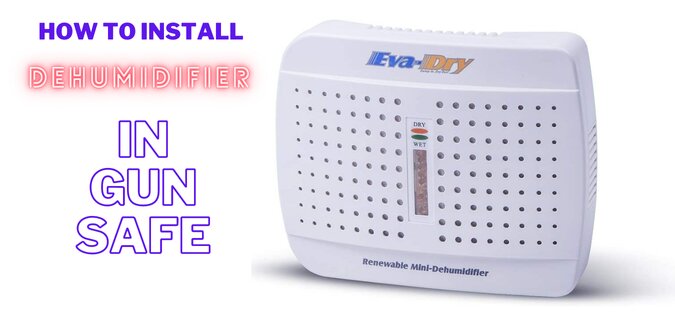How to Make Your Gun Safe More Fireproof: Top Methods
To make a gun safe more fireproof, add fire-resistant insulation and use a fireproof sealant around the door. Ensure the safe’s fire rating meets your requirements.
Gun safes are essential for protecting firearms from unauthorized access and potential damage. Enhancing the fireproofing of your gun safe ensures that your valuable firearms and important documents remain secure during a fire. Adding fire-resistant insulation inside the safe and applying a fireproof sealant around the door are two effective ways to increase fire protection.
Choosing a gun safe with a high fire rating can provide additional peace of mind. Taking these steps will help safeguard your possessions against fire hazards, ensuring they stay intact and secure.
Choosing The Right Gun Safe
Choosing the right gun safe is crucial for protecting your firearms. A good gun safe keeps your guns out of reach from unauthorized hands. It also protects them from fire damage. Here’s how to make an informed decision.
Material Matters
The material of the gun safe matters a lot. Steel is the best material for a gun safe. Look for thick steel walls. The thicker the steel, the better the protection. Avoid gun safes made of thin metal or plastic.
Also, check the door construction. Solid steel doors provide the best protection. Some doors have extra layers for added security. Choose a safe with a continuous weld for maximum strength.
Fire Ratings Explained
Fire ratings tell you how long a gun safe can withstand fire. Look for safes with a UL (Underwriters Laboratories) rating. A common rating is 30 minutes at 1200°F. This means the safe can protect its contents for 30 minutes in a fire.
Check the insulation material inside the safe. Good insulation keeps the inside temperature low during a fire. Gypsum board is a common fireproof material used in safes. Some safes have multiple layers of insulation.
Here is a table to help you understand fire ratings:
| Fire Rating | Protection Time | Temperature Resistance |
|---|---|---|
| UL 30 minutes | 30 minutes | 1200°F |
| UL 60 minutes | 60 minutes | 1400°F |
| UL 90 minutes | 90 minutes | 1700°F |
Choose a gun safe with a high fire rating for better protection.
Insulating Your Gun Safe
Protecting your gun safe from fire is crucial. Proper insulation helps keep your firearms safe during a fire. There are different types of insulation materials that can enhance the fireproofing of your gun safe. In this section, we will discuss two effective insulation methods: fireboard insulation and ceramic wool insulation.
Fireboard Insulation
Fireboard is a popular choice for insulating gun safes. It is made from gypsum and other fire-resistant materials. Fireboard works by slowing down the heat transfer during a fire.
- Fireboard is easy to install inside your gun safe.
- It adds an extra layer of protection.
- Fireboard comes in various thicknesses, offering different levels of protection.
Here is a quick comparison of fireboard thickness and its fire resistance rating:
| Thickness (inches) | Fire Resistance (hours) |
|---|---|
| 1/2 | 1 |
| 5/8 | 2 |
| 1 | 3 |
Ceramic Wool Insulation
Ceramic wool is another effective insulation material. It is made from high-temperature ceramic fibers. Ceramic wool can withstand extreme temperatures, making it ideal for fireproofing gun safes.
- Ceramic wool is lightweight and flexible.
- It provides excellent heat resistance.
- It can be used in combination with other insulation materials.
Here are some benefits of using ceramic wool insulation:
- High thermal resistance
- Easy to install and cut to size
- Non-combustible and non-toxic
Using ceramic wool can significantly improve the fire resistance of your gun safe.
Sealing The Gaps
Sealing the gaps in your gun safe is crucial for fireproofing. Fire can easily penetrate through small openings. Ensuring these gaps are sealed helps protect your valuable firearms. Below are some key areas to focus on.
Door Seals
The door seal is the first line of defense against fire. A high-quality door seal expands when heated, blocking out flames and smoke. This protects the interior of the safe. Look for seals that expand at least 5 times their size. Here is a simple checklist:
- Check for gaps around the door.
- Install a heat-activated door seal.
- Ensure the seal is continuous and unbroken.
Make sure the seal adheres firmly. Replace any worn or damaged seals.
Hinge Protection
Hinges can be a weak point in a fireproof gun safe. Heat can warp and weaken hinges, allowing fire to enter. Protect your hinges with these steps:
- Install fire-resistant hinge covers.
- Use steel hinges instead of aluminum.
- Regularly inspect hinges for damage or wear.
Hinge protection ensures the safe remains sealed during a fire. This keeps your firearms secure.

Credit: www.amazon.com
Using Fireproof Liners
One of the most effective ways to make your gun safe more fireproof is by using fireproof liners. These liners add an extra layer of protection, ensuring your valuables remain intact during a fire. This section will cover the types of fireproof liners and provide installation tips to enhance the fire resistance of your gun safe.
Types Of Liners
Different types of fireproof liners are available in the market. Each type offers varying levels of protection. Here are some common types:
- Ceramic Fiber Liners – These liners are lightweight and provide excellent thermal insulation.
- Gypsum Board Liners – These are easy to install and offer good fire resistance.
- Intumescent Liners – These liners expand when exposed to heat, creating a protective barrier.
- Fiberglass Liners – Durable and resistant to high temperatures, these are a popular choice.
Installation Tips
Proper installation is crucial to ensure maximum protection. Follow these tips for effective installation:
- Measure the interior of your gun safe accurately. This ensures the liners fit perfectly.
- Cut the liners according to the measurements. Use a sharp knife for precise cuts.
- Secure the liners using fire-resistant adhesive. Make sure the adhesive covers all edges.
- Overlap the liners if necessary. This provides additional protection by covering any gaps.
- Seal all joints with fireproof sealant. This prevents heat from seeping through the cracks.
By following these steps and using the right type of liner, you can significantly increase the fire resistance of your gun safe. Protect your valuable firearms and documents from fire damage effectively.
Placement Considerations
Ensuring your gun safe is fireproof is crucial for protecting your valuables. One key factor is where you place the safe. The right placement can significantly enhance its fireproof qualities.
Safe Room Selection
Choose a room with a lower fire risk. Basements are excellent options. They stay cooler during a fire. Avoid placing the safe in the kitchen or garage. These rooms often have higher fire risks.
Away From Flammable Materials
Keep the safe away from flammable materials. This includes things like gasoline, paint, and papers. Storing these items near the safe increases fire risks. The safe should be in a clear, clutter-free space.
| Placement Area | Fire Risk Level |
|---|---|
| Basement | Low |
| Kitchen | High |
| Garage | High |
Consider these placement tips to make your gun safe more fireproof. A well-placed safe offers better protection during a fire.
Adding Fireproof Barriers
Adding fireproof barriers enhances the safety of your gun safe. These barriers help protect your valuable items from fire damage.
Concrete Barriers
Using concrete barriers adds a strong layer of protection. Concrete is durable and withstands high temperatures. A concrete wall around your gun safe is very effective.
- Concrete is non-combustible.
- It has high thermal mass.
- Concrete barriers are long-lasting.
To install concrete barriers, follow these steps:
- Measure the area around the gun safe.
- Purchase pre-made concrete panels or mix concrete.
- Construct walls around the safe, ensuring no gaps.
Fireproof Drywall
Fireproof drywall is another great option. This material can resist fire and protect your safe. Installing fireproof drywall is simple and effective.
| Feature | Benefit |
|---|---|
| Non-combustible material | Reduces fire spread |
| Easy installation | Quick setup |
| Cost-effective | Affordable protection |
To install fireproof drywall:
- Measure and cut drywall to fit around the safe.
- Screw the drywall to the existing walls.
- Seal the edges with fireproof caulk.
Both concrete barriers and fireproof drywall provide excellent protection. Choose the option that suits your needs and budget.
Regular Maintenance
Regular maintenance keeps your gun safe more fireproof. It ensures the safe stays in top condition. Follow these steps to maintain your gun safe.
Inspecting Insulation
Inspect the insulation regularly. Make sure it’s intact and effective. Damaged insulation reduces fire resistance.
- Check for cracks or gaps.
- Replace any worn-out material.
- Use high-quality fireproof insulation.
Checking Seals
Seals prevent heat from entering the safe. Check them often for wear and tear. Worn seals compromise fireproofing.
- Inspect door seals for damage.
- Ensure seals are tight and secure.
- Replace seals if they appear worn.
Use these tips for better gun safe fireproofing. Maintain regularly for best results.

Credit: m.youtube.com
Emergency Preparedness
Preparing your home for a fire involves more than just having a fire extinguisher. Making your gun safe fireproof requires some crucial steps. These steps ensure your valuables stay secure during a fire.
Fire Safety Plan
A fire safety plan is essential for protecting your home and belongings. Start by creating a clear and simple escape route for your family.
- Identify all exits in your home.
- Ensure everyone knows how to use them.
- Practice your escape plan regularly.
Install smoke detectors and fire alarms throughout your home. These devices provide early warning in case of a fire. Place them near bedrooms and the kitchen.
Keep a fire extinguisher in key areas like the kitchen and near your gun safe. Make sure everyone knows how to use it.
Quick Access Tools
Quick access tools help you respond fast during a fire. Store these tools in accessible locations.
| Tool | Location |
|---|---|
| Fire Extinguisher | Near gun safe, kitchen |
| Fire Blanket | Bedrooms, kitchen |
| Flashlight | Near exits, gun safe |
Place a fire blanket in bedrooms and the kitchen. These blankets can smother small fires quickly.
Keep a flashlight near exits and your gun safe. It helps you see clearly if the power goes out during a fire.
Emergency preparedness is key to making your gun safe more fireproof. A solid fire safety plan and quick access tools can save lives and property.
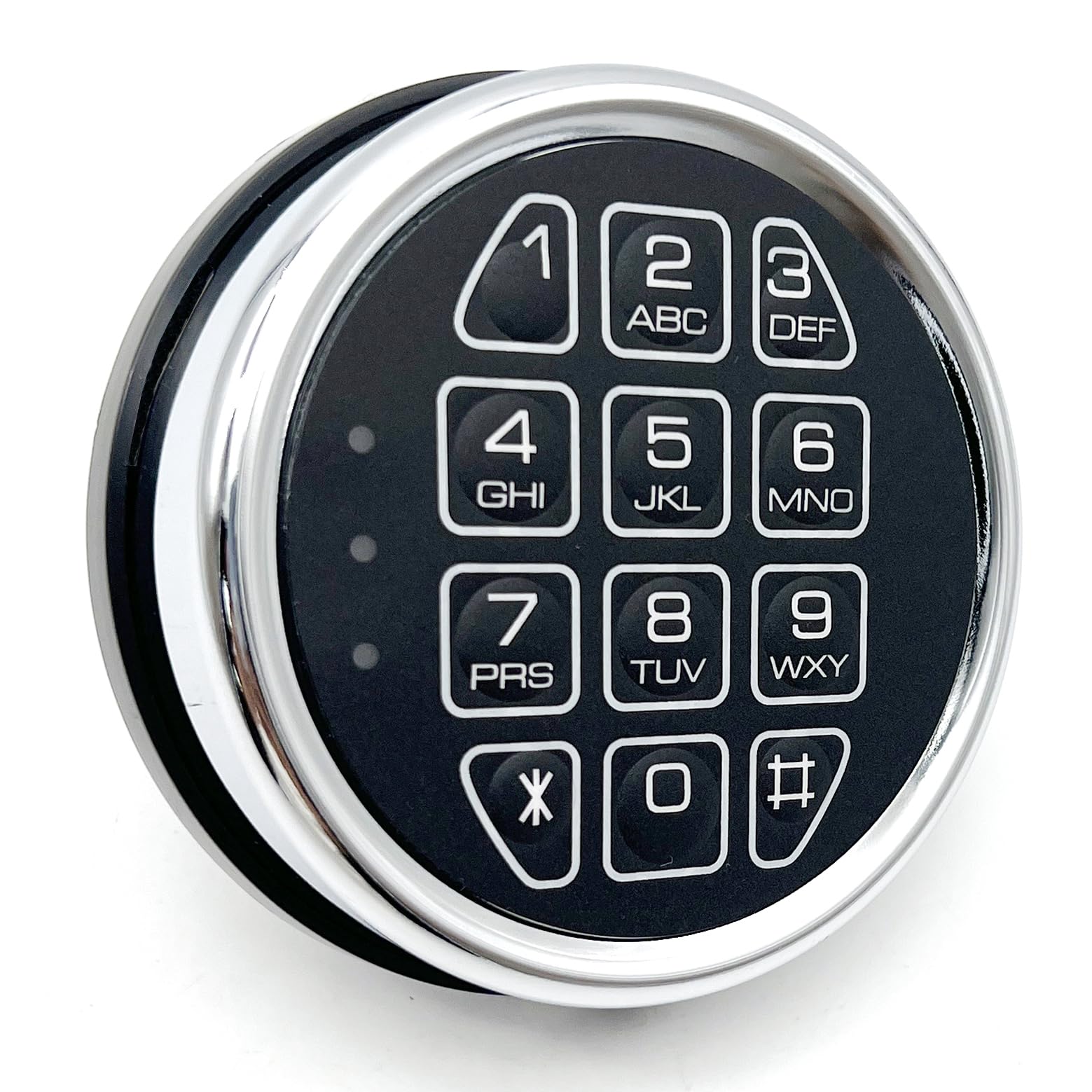
Credit: www.amazon.com
Frequently Asked Questions
How Can I Fireproof My Gun Safe?
To fireproof your gun safe, use fire-resistant materials like gypsum boards. Add fire seals and ensure it has a high fire rating.
What Materials Make A Gun Safe Fireproof?
Materials like gypsum boards, ceramic wool, and fire-resistant steel can enhance a gun safe’s fireproofing capabilities.
Does Adding A Fire Seal Help?
Yes, adding a fire seal can significantly improve your gun safe’s resistance to high temperatures and smoke damage.
How Important Is The Fire Rating Of A Gun Safe?
A high fire rating is crucial. It indicates how long the safe can protect its contents in a fire.
Conclusion
Boosting your gun safe’s fire resistance is essential for protecting valuable items. Use fireproof materials and seals. Regularly check and maintain the safe to ensure its effectiveness. Investing in a quality fireproof gun safe provides peace of mind. Follow these tips to enhance safety and security for your firearms and valuables.

